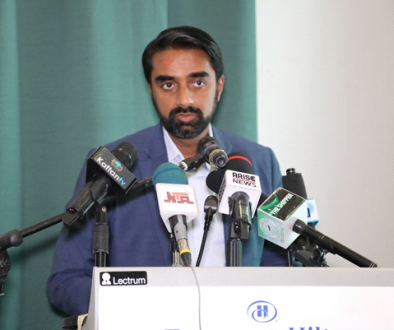Revamping Nigeria’s Rural Agricultural Economies by Soji Apampa

Newspapers are replete with the alarming stories of Fulani herdsmen/farmers[1] or Fulani herdsmen/community[2] clashes. The clashes have often resulted in condemnable, criminal, barbaric acts that have largely gone unpunished by the authorities and have led to calls for a ban on open grazing of cattle in states like Ekiti and Benue;[3] calls for the establishment of ranches by 11 Northern States;[4] and resistance to a National Grazing Reserves Establishment Bill (2016)[5] from everywhere but the far North of Nigeria. As serious as the issue is, no one seems to have proffered a satisfactory response.
The Fulani homestead is run on proceeds from the milk economy. Sale of cattle does occur but only to meet extraordinary expenses rather than for day-to-day subsistence. However, the breeds of cattle they manage which are hardy and can survive the West African conditions (insects, disease and drought) are better for beef production than for milk production. Without genetic improvement, across Africa, local breeds yield an average of 5-6L of milk/day but in Nigeria they achieve between 0.1 and 3L a day. For a cow to produce one litre of milk, it needs to drink at least 3L of water a day and have access to good quality fodder. The fodder available to the herdsmen in Nigeria, access to which they appear ready to kill farmers and murder entire communities for, is typically high in Lignin content and has a low conversion ratio – the fodder consumed still produces inadequate yields of milk. The long treks the animals go through in search of water and fodder also induce nutritional stress and very little of what is eaten has the luxury of being converted to milk – it is mostly burned up as energy.
The Business Innovation Facility (BIF) a UK Aid programme embarked on action learning to see if any of these constraints could be overcome. It purchased Napier grass seedlings from East Africa for £1,000 where similar challenges had been addressed by pastoralists and planted this in Ladduga Grazing Reserve, Kachia Local Government, Kaduna State in partnership with one of the pastoralist cooperatives there. After 45 days, the grass had grown and was taller than a man. The cooperative did trials – they had four cows fed for two weeks on their usual fodder and another four fed only on the Napier as fodder. Those fed on their usual fodder continued producing less than 1L of milk a day whilst after 2 weeks those on the Napier fodder produced 3.5L/day. This was the first sign that not having the right fodder was a big constraint. The raw milk sells for about N100/L so producing 3.5L/day meant a tripling of income from one cow. There are 240 lactating days in the year so the increase in income from one cow is very significant.
Another thing the BIF programme observed was that the women then boiled the milk to pasteurise it and they typically boiled off 20% of the milk by volume. The programme taught them indirect pasteurisation techniques helping them to save the N20/L they were losing. The programme then went on to teach the women how to make cottage yoghurt (which could last at least 5 days without refrigeration). This was sold by the women for N600/L on the market days in the grazing reserve and now the programme is helping the cooperative to establish a mini milk processing facility within the reserve. The immediate impact of this production would be to increase the crude animal protein intake of members of that community. 40% of the body’s dry matter is protein however, intake of animal protein is at present 4.82g/caput/day in Nigeria as against the 35g recommended by FAO[6] leading to stunted development and other health problems. Secondly, a mini milk processing facility, processing 1,000L/day will directly touch 200-500 households everyday (who sell milk), create 10-20 milk aggregators, 7-10 milk collectors on motor bike, 6 Factory jobs, and 20 bicycle-based retailers. This will be enabled by Agency-Banking services run locally to mention a few of the economic benefits. The households and persons impacted will increase their incomes in the process. With the increase in incomes, it is not unthinkable to get beneficiaries to put down 10% of the extra incomes they are earning over and beyond what they had before the intervention towards the maintenance of the processing facility.
Because of the Napier grass introduction, Kaduna State government has taken up the strategy of homestead Napier propagation (and spread it to some 80 communities spending about £200,000 in 2016 to replicate the trial) as an alternative to open grazing and the Federal Government has also now adopted promotion of Homestead Napier propagation as policy. Commercial Napier grass producers are also springing up and seedlings have been purchased and planted by cooperatives from most of the 11 grazing reserves in Northern Nigeria. The Fulani youth are starting to think that there is a possibility of becoming more sedentary as the risks of nomadic life also include clashes with cattle rustlers who typically show no mercy to the herdsmen. Excited by the progress being made to increase milk yields and the planned mini processing facility, the Kaduna State government promised to invest to fix the rural road linking Ladduga to the main Kaduna-Kafanchan highway.
The major reflections from the action learning exercise were that growth in rural economies in Nigeria could be stimulated given: –
- The right levels of research to identify the real root causes of constraints and innovations in ways of intervening. Providing the right kind of fodder was more transformative than banning open grazing or forcing herdsmen into ranches
- Innovations that show their worth by pointing out what must be done for the poor to achieve sustainable income growth. The extra 2.5L/day was a straight increase in income as was the N20/L saved from losses and the N350/L extra profit from cottage yoghurt (sold at N600/L but costing N250/L to produce)
- Income growth that is inclusive of women and youth, and not just the men (the cottage yoghurt produced by women, and the milk collection system, bicycle-based retail system run by the youth)
- Scale and sustainability – the rural economy must eventually be integrated into the mainstream – the distribution of products will go into nearby towns and villages
- The power of example and demonstration of the potentials to attract investment. Based on the £1,000 experiment a State Government replicated it with £200,000 and is leading BIF to encourage investors to establish a mini processing plant.
- Investments in the rural infrastructure. Based on the planned investment in a mini-processing plant, the State Government has committed to fixing the rural roads to support the scaling up of the initiative.
- Sustained improvements in the standard of living of pastoralists involved. This can generate positive spin-offs like establishment of local clinics and provision of other services such as off-grid energy and so on.
So, how do we revamp Nigeria’s rural agricultural economies? It would appear to take a focus on 7is – innovation, incomes, inclusion, integration, investment, infrastructure and improvements if we find enough Nigerians willing to take an evidence based approach to investing in the rural economy rather than copying what they see others doing in agriculture. After all, such attitudes lost millions of Nigerians their investments on the Nigeria Stock Exchange between 2008 and 2009.
[1] https://infoguidenigeria.com/fulani-herdsmen-farmers-clashes/
[2] https://www.vanguardngr.com/2017/06/tension-enugu-community-clash-herdsmen/
[3] http://dailypost.ng/2017/05/04/breaking-benue-bans-open-grazing-cattle-stipulates-5-year-jail-term-n1m-fine-offenders/
[4] http://www.peoplesdailyng.com/cattle-ranches-problems-and-prospects/
[5] https://www.vanguardngr.com/2016/04/nigerians-say-no-national-grazing-reserves-bill/
[6]https://www.unaab.edu.ng/attachments/Revolutionising%20the%20Feed%20Industry%20for%20Increased%20Poultry%20Production.pdf



May 29, 2021 @ 7:41 am
Very informative. Thanks for sharing